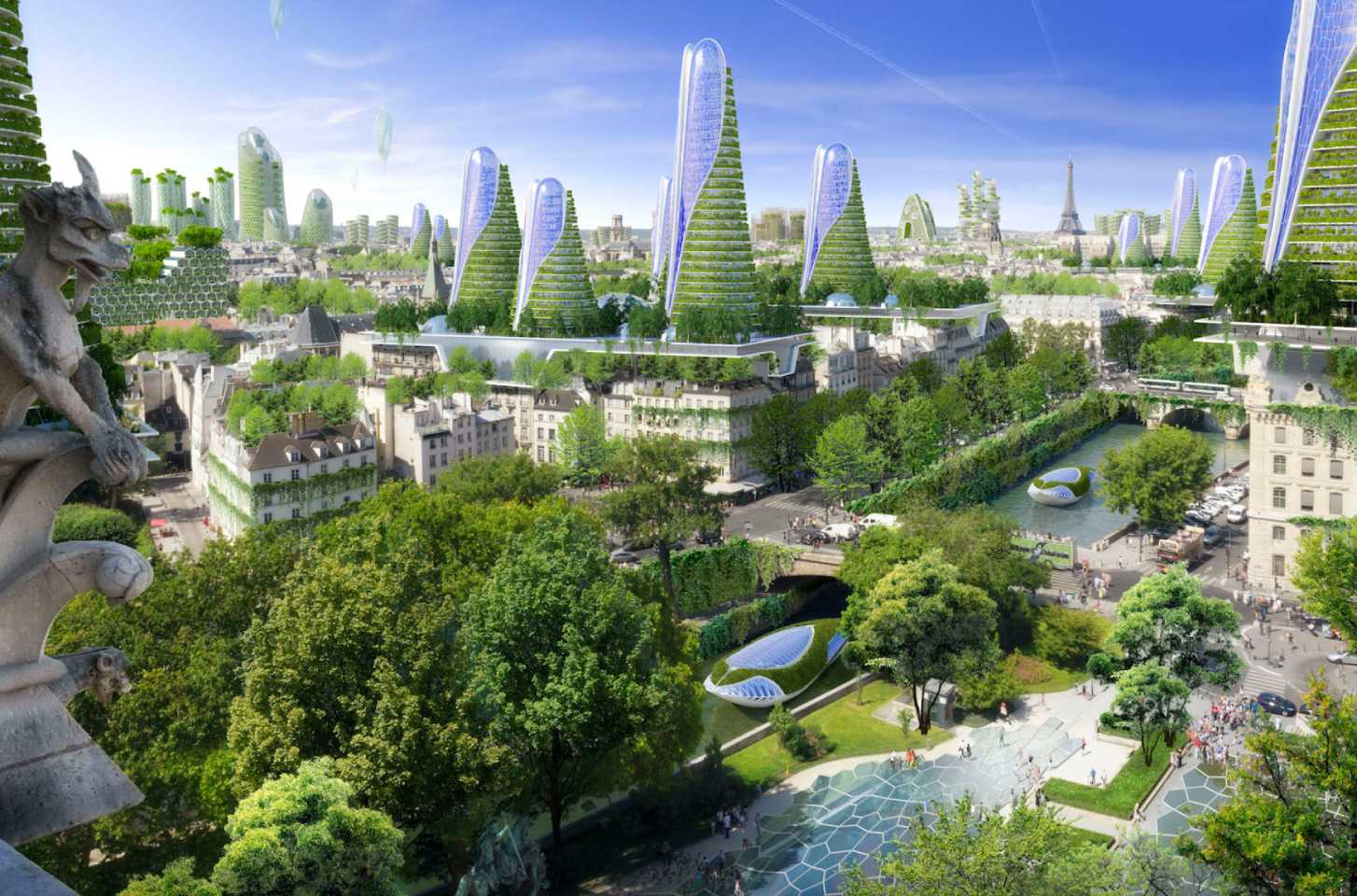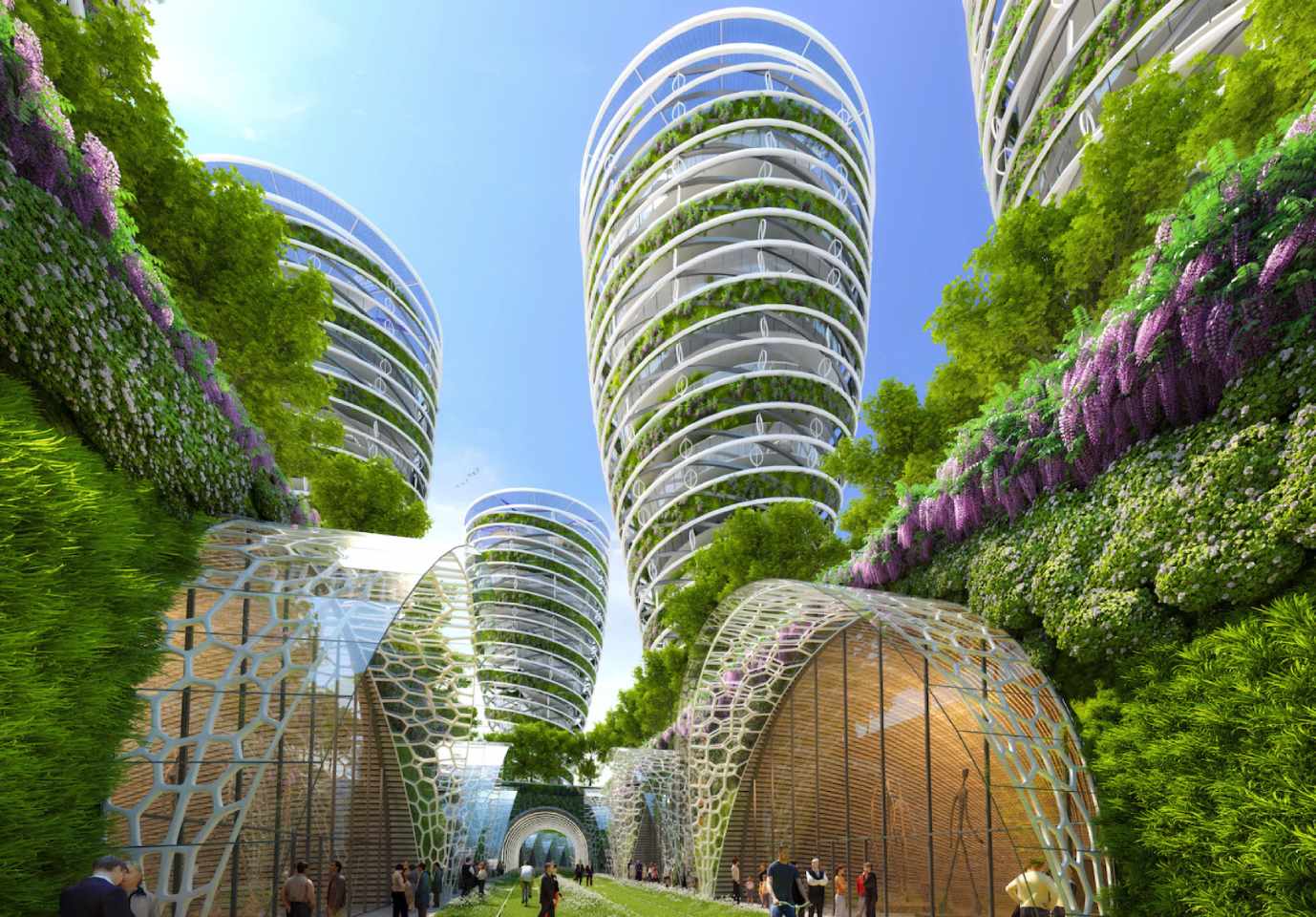A glimpse of the green skyscrapers designed by Vincent Callebaut Architectures.

Paris, known as the city of light and history, has always struggled to strike a balance between its architectural legacy and the demands of a constantly shifting global environment. For this reason, it doesn’t seem so strange to construct a string of environmentally friendly towers.
The ambitious “2050 PARIS SMART CITY” plan raised a crucial query: Should Paris remain a museum city or allow for change? This research and development project is being managed by the architecture firm Vincent Callebaut Architectures and includes engineers from Setec Batiment. It has large plans for the city’s future in keeping with the Paris Climate Energy Plan, which aims to cut greenhouse gas emissions by 75% by 2050.

As a result, a group of ecological towers were built to not only cut down on pollution and make the city denser but also bring nature back into the middle of the city.
The positive energy towers (BEPOS) combined bioclimatic design with renewable energy. They had solar panels that looked like dragonfly wings, reversible hydroelectric storage, and balcony plants that reused water and encouraged phytopurification and composting.

Another interesting aspect of this future concept is the redevelopment of the Petite Ceinture, a former train route that circles Paris.
During its peak, it served as a crucial connection between the city’s defenses and major train stations. But it lost some of its utility with the advent of the subway. Now, the city is transforming this architectural treasure into a verdant ecological corridor. This will give residents additional green space and preserve the history of the railway.
The ecological towers, also known as Antismog Towers, are crucial to this transformation since they are constructed with integrated phytopurification and community gardening systems.

These eco-friendly buildings are not only meant to look great but they are also meant to be energy-efficient and good for the environment. These projects show that the architecture of the future can be both environmentally friendly and aesthetically pleasing. For example, wind turbines can be used to make electricity, and the Petite Ceinture tunnels can use the difference in temperature to cool buildings passively. super cool.

These new ideas for architecture are making the dream of a better, more sustainable Paris come true. The eco-towers show us what the city will be like in the future: a Paris that accepts modernity without losing its historic charm, where nature and architecture coexist peacefully. This is an exciting time in the history of this famous city.